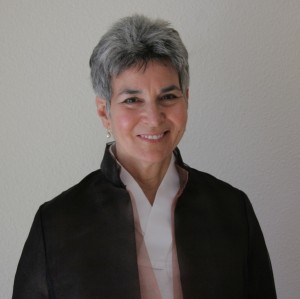
For an interesting slant on nonviolent social engagement, I recommend studying the historical example of Buddhist women. The 2,300-year history of Buddhist women, back to the time of the Buddha, teaches us about the liberating effects meditation practice had on women who were disempowered within their cultures.
Buddhist women’s firsthand experience of personal injustice was transformed through the power of meditation to produce nonviolent and socially engaged action throughout the Asian Buddhist world over the course of many centuries. The spiritual and political empowerment of Asian Buddhist women is all the more striking when we consider that they were seen as chattel (as in cattle) who belonged to the men in their families and were obligated to serve and care for their family members with little regard for their own development.
Consistently in the history of Buddhist women, meditation practice provided a powerful catalyst that transformed their sense of victimhood into institutions—institutions that quietly and effectively rallied against harsh and cruel conditions affecting men, women and children in Asian societies. Zen women, despite their difficult circumstances, succeeded in uplifting their communities with socially engaged Buddhist practices. They instituted justice for the abused and support services for the poor.
Today, there is much argument about whether women’s caregiving tendency arises from social obligation or from biological imperatives. Sidestepping the nature-nurture argument, just how did Buddhist women transform their family caregiving into socially engaged institutions? In the Buddhist world, meditation itself provided the power to lessen the effect of both women’s internalized images of helplessness and their lack of economic and social autonomy. The result—long before psychotherapy or women’s liberation groups—Buddhist meditation consistently empowered women to transform their own personal injury and sense of injustice into social benefit for their communities. Women participated not as the lesser beings described by their culture, but with the dignity, strength and self-respect of liberated human beings.
For more than 2,000 years, Buddhist women have rescued abandoned widows and orphans, sheltered physically abused women, fed the hungry and provided medicine for the diseased. All of this was done at a time when women had no legal rights to own property or to travel outside their homes.
The first documented shelter for abused wives was founded in 13th century Japan by Zen nuns of Tokeiji temple. Here, when there were no legal options for women to obtain a divorce, wives who escaped violent husbands were protected. For 500 years, the nuns of Tokeiji temple provided physical protection, restoration of the legal right to remarry and transformative spiritual practice for women.
For those who are engaged in developing nonviolent means to change our current 21st-century social reality, the history of Buddhist women provides some striking lessons in both personal and social transformation even within the most difficult circumstances. How does this work? Meditation is used to self-reflect—what is it in our mind that meditates and what is it that we experience when we meditate? In the simplest terms, in Buddhist meditation, we let go of thinking, remembering and worrying. Instead of the tiring and unproductive mind states that review troublesome conditions we are trying to solve, we enjoy some respite and peace. With a little instruction and some practice, most people can lower their stress level and improve their sense of well-being.
Who among us, especially in the peace-seeking community, would not benefit from greater inner peace? There are so many problems to solve and so many setbacks that we all face burnout in our pursuit of justice. Just 10–20 minutes of meditation practice can lessen the effects of cultural conditioning.
If worrying and anger over injustice could solve our problems, our planet would already be a paradise. But we can see for ourselves that anger, frustration and worry lead to a downward cycle of stress. Our frustration does not produce the optimal results that we strive for in our efforts to bring peace to our planet. Using meditation, we can let go, even if briefly, and experience peace and well-being. If we can learn to do meditation for even a few minutes, we find that peaceful reality is close at hand anytime we wish to turn toward it. In meditation, as we free ourselves from our inner dialogue by simply being present with the in breath and the out breath we may experience a sense of ease and freedom.
Just as the history of Zen Buddhist women illustrates, our ability to help our community and transform injustice does not depend on fortuitous circumstances but rather on our own personal liberation and a community of like-minded companions. Just as historical Buddhist women were freed from negative images imposed by their society, we can free ourselves from the inner dialogue that limits our options.
Once we experience a greater sense of empowerment through meditation practice, we naturally sense a more compassionate connection to all other human beings. As we begin to let go of our anger, righteousness and resentment, we may even succeed at generating a peaceful state of mind during difficult circumstances. This sense of peaceful connection helps us to be less selfish and less self-referent and therefore more realistic, more effective and more peaceful in our approach.
Studying the history of Zen Buddhist women encourages all of us to make use of meditation as a resource to realize within ourselves the healthy inner peace and strength we would like to bring to our communities. While injustice and difficulties may seem overwhelming at times, we have many examples of inspiring transformation among Zen women. Why not enjoy the same restorative and transformational effects of meditation that have uplifted Zen women to lead their own communities to justice and compassion?
